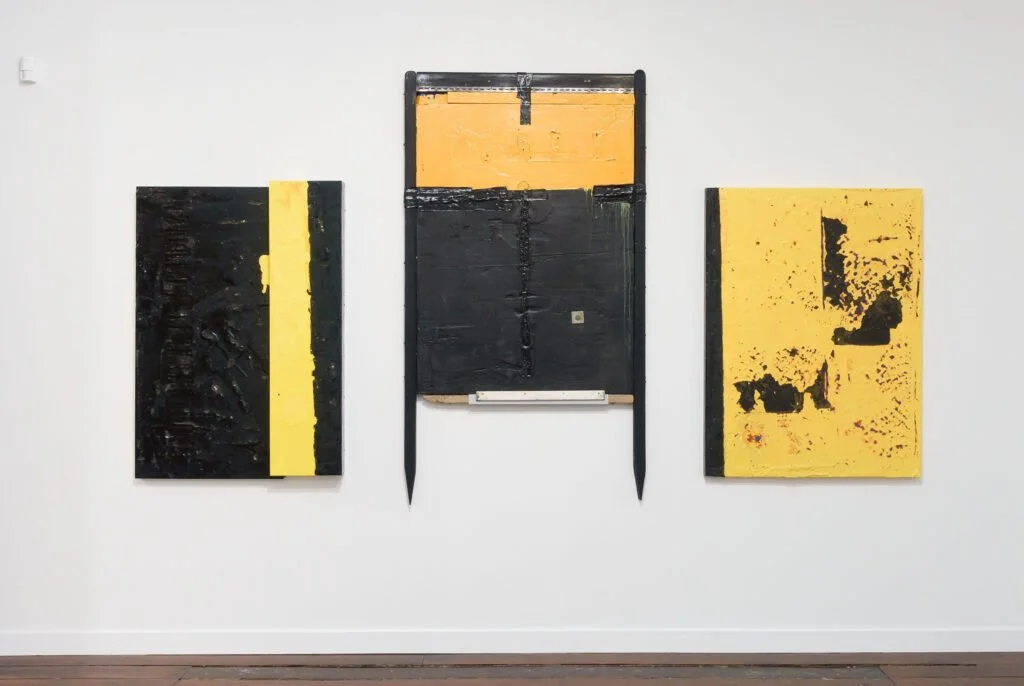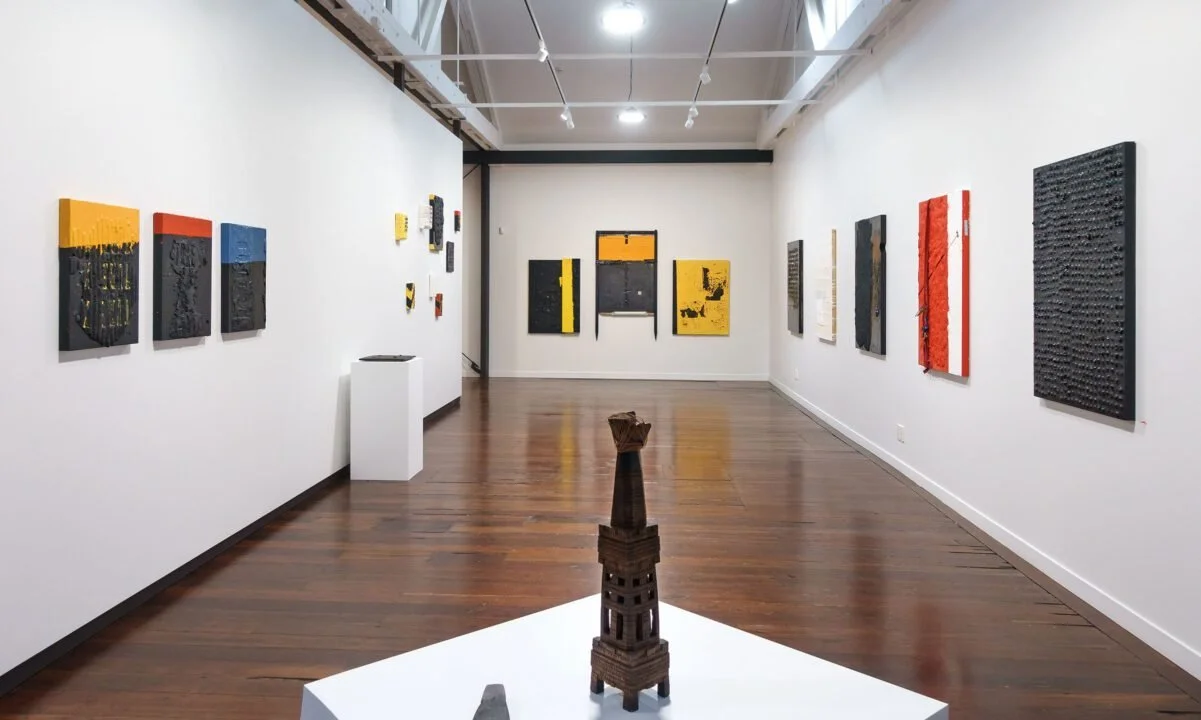Industrial Camouage [The Chaos of Hope]
Sefton Rani describes himself as a maker who uses paint as his material of choice to create contemporary Pacic art. Rani produces work that exists outside hackneyed tropes of palm tree-fringed sunsets or other touristic motifs, yet still holds strong connection with the art, history and spirituality of the southernmost of the Cook Islands, Mangaia. Rani’s father, Rikado Mii Rani, left Mangaia in 1960 to work in the industrial paint factories of Auckland and never went back.
The physical act of art making provides Rani an opportunity to think about his ‘Pacificness’. He explains:
Making gives me an opportunity to think. To think about heritage arts, think about my place in that lineage, how I feel the ancestors watching, how I strive to extend what Pacific art is. [It] gives me a reason to research history … which is my way into understanding what it is to be an urban Polynesian as the information of the past was not handed down.
In his recent exhibition, ‘Industrial Camouflage [The Chaos of Hope]’, the last one to be shown at the now closed Scott Lawrie Gallery, Rani was forced to pivot to produce a body of work that nearly did not get made, or rather, was made almost entirely again.
Sefton Rani, installation view, 2023. Image © Sait Akkirman
Rani and wife Kirsten lost their home on the apocalyptic night that Cyclone Gabrielle devastated Piha, their small community on Auckland’s west coast. Slips destroyed houses, blocked roads and torrential rain caused flooding. Rani’s studio and all the work he had accumulated and almost all the paint skin material he had been making over the previous 12 months before the cyclone hit were also gone.
The works that make up the exhibition predominantly respond to the night and immediate aftermath of this cyclone experience. There’s a Hotere-like darkness to the works into which Rani has sunk text into paint coagulated with black iron sand collected from Piha.
While Rani took art all through secondary school and was always drawing (as his father did) and making through childhood, his teacher told him he wasn’t good enough for art school. Art in the 80s at Kelston Boys and elsewhere at the time meant Kandinsky and the high priests of European or American modernism—certainly not anyone ‘Polynesian’, except if they were a … perhaps a “primitivist” influence on Picasso or Brancusi.
After leaving school with two ‘B’ Bursaries gained in consecutive years, Rani started at the bottom of the hotel industry as a bellboy. A highly successful 25-year career eventuated where he became a hotel IT guru and something of a travelling Mr Fix-It who opened hotels across the globe. He had stints in Sydney, New York, Hong Kong, Shanghai and most of the major cities of the world, where he always visited public and commercial galleries.
It is perhaps this formative international experience, and his particular interest in the marriage of painting and sculpture, that has led him to be most responsive to global contemporary artists like Anselm Kiefer, Christopher Wool, Rachel Whiteread, Theaster Gates, Sterling Ruby and particularly Mark Bradford.
Sefton Rani, View of the installation, 2023. Image © Sait Akkirman
Like Bradford, Rani is self-taught and only made the decision to leave the corporate world for an art practice 10 years ago. He has brought to bear his rigorous work ethic, charisma and intellect to all aspects of his practice since, and has even recently made the Listener’s top 100 list: New Zealand’s most intriguing people as part of the Visual Arts line-up. [1]
He is deeply interested in the Italian Arte Povera movement as well as the Japanese concept of wabi sabi which both place emphasis on imperfection. Rani saw Lawrence Carroll’s work exhibited in Auckland saying that ‘it was definitely something that made me have a hard look and made me think about the whole Arte Povera movement.’ More recently, late in 2022, the artist saw Bradford’s Pickett’s Charge at the Hirshhorn Museum in Washington DC. Bradford’s conflation of abstract painting with the social and political realities of today was profoundly influential.

